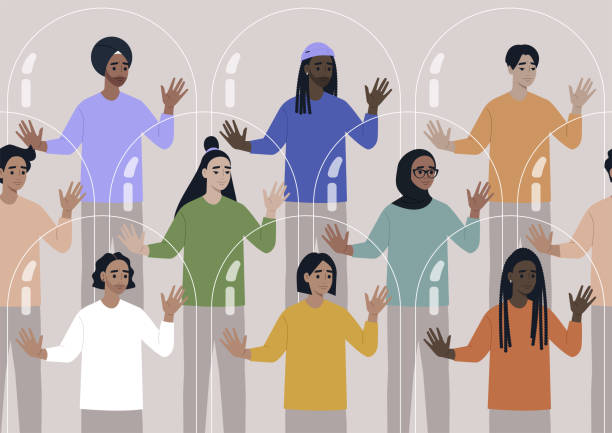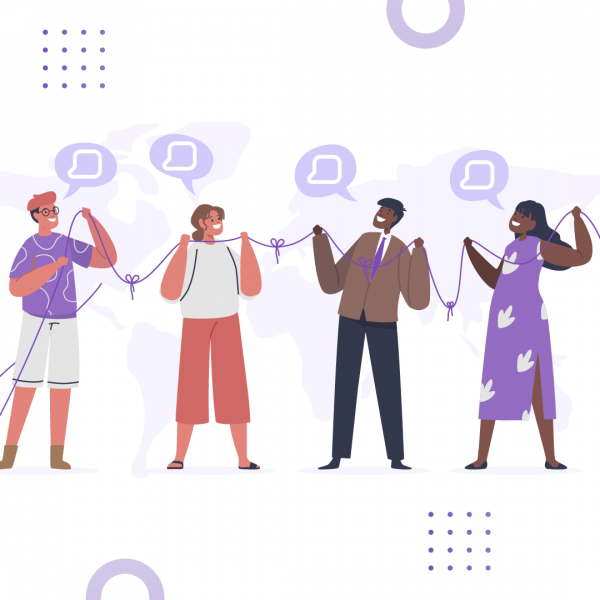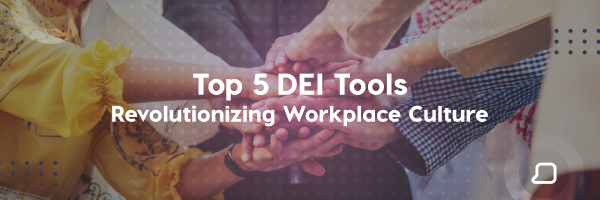
Diversity and Inclusion. Two terms that sound great on paper and feel even better in practice.
You know that organizations that have embraced the beauty of diversity and inclusion outperform their counterparts who have not yet broken free of systemic limitations in their institutions.
Yet, when you try implementing DEI initiatives, it feels like trying to solve a complex jigsaw puzzle—you’re met with resistance and frustration that prevent your initiatives from taking hold.
So how can you overcome these barriers and create a truly diverse and inclusive environment? That’s what we’re going to explore today.
| Key Takeaways |
|---|
|
Barrier 1: Biases We Don’t Even Realize We Have
Perhaps one of the most subtle and challenging threats facing your diversity and inclusion initiatives is unconscious biases. After all, how can you overcome a barrier that you can’t even see?
Biases are inherent in human nature, shaped by experiences, societal norms, and even the flood of social media.
Though unintentional, these unconscious biases silently impact every aspect of your business, from daily interactions to recruitment and retention. And ultimately, they have the power to undermine your efforts to foster diversity and inclusion.
How to Combat Unconscious Bias
So how exactly can you overcome hurdles you don’t even know existed in the first place? The best thing you can do is to be proactive. Here are some strategies you can implement:
- Prioritize Awareness: Hold frequent seminars to help employees reframe their mindset to appreciate the value of diversity and inclusion. In fact, some of the most inclusive companies in the world make it an organizational priority to educate employees about unconscious bias and its impacts.
- Blind Recruitment: Implement strategies that remove personal information from resumes to allow recruiters to make fair decisions based on skill and merit rather than unconscious bias.
- Structured Interviews: Having a standard set of interview questions reduces the chance of bias influencing the outcome.
Barrier 2: Leadership’s Commitment Is Lukewarm
The success of your DEI initiatives starts at the top. If leadership doesn’t make any move to champion diversity and inclusion, employees will be compelled to follow suit.
There’s a reason why many leadership training seminars reference the old adage “Lead by example”; yet 77% of businesses find their leadership is lacking in one way or another.
Without an inclusive leader to lead the charge, employees may perceive the much-preached concept of diversity as mere lip service, or worse: it might cause feelings of exclusion.
How to Foster Inclusive Leadership
The good news is that there are some highly effective ways to help transform leadership’s mindset, starting with:
- Fostering Genuine Commitment: Training sessions focused on cultural awareness, the importance of empathy, and inclusive decision-making can motivate leaders to actively support diversity initiatives.
- Set Clear Targets: Incorporate diversity and inclusion targets into leadership’s performance evaluation. This ensures commitment extends beyond words into meaningful action.
- Involve Leadership in Initiatives: Encourage leaders to be active participants in the diversity initiatives your organization wants to spearhead. This will help them invest more energy in seeing it through.
Barrier 3: Resistance to Change
Even though changing to a more diverse and inclusive environment is healthier, resistance and opposition should be expected and prepared for. After all, it’s hardwired into our brains.
Regardless of their job title, employees can feel threatened by the proposed inclusion culture for fear of losing their position. They may show their resistance subtly or more pronounced (depending on their position in the organization).
But either form can stagnate progress, putting a chokehold on the positive impacts a diverse and inclusive environment can bring to an organization.
How to Alleviate Resistance
The last thing you want to do is try to forcefully make the change, as it will only cause some to dig in. Rather you should try to take some strategic steps to help pacify their resistance, such as:
- Gradual Implementation: Consider implementing changes gradually, giving employees time to adjust and adapt. Address concerns and offer support throughout the process to ease the transition.
- Foster Participation: Give employees a chance to actively contribute ideas, provide feedback, and help shape inclusive practices. This fosters a sense of shared responsibility and can help drive the necessary change.
- Celebrate Diversity: Create opportunities for employees to share and celebrate their unique experiences and backgrounds. This can help break down resistance and foster a greater appreciation for diversity.
Barrier 4: Not Understanding Diversity and Inclusion’s Benefits
Misconceptions about diversity and inclusion can act as significant barriers. They can lead to misunderstandings about the true value these elements bring, resulting in a lack of support for relevant initiatives.
Without a clear understanding of the benefits of diversity and inclusion, employees may perceive these efforts as unnecessary or believe that this new culture is unnecessarily sidetracking the organization’s fundamental objectives.
How to Deal With These Misconceptions
Since a lack of awareness is the primary reason for these misconceptions, the proper solution would be an enlightenment campaign. You could try things like:
- Providing Clear, Evidence-Based Arguments: Demonstrate the business and ethical case for diversity and inclusion. Use research and statistics to highlight the measurable benefits they bring to an organization.
- Sharing Success Stories: Highlight examples of successful diverse, and inclusive organizations. Real-world examples can provide powerful evidence of the advantages.
- Promoting Ongoing Education: Keep the conversation on diversity and inclusion alive. Regular workshops or seminars can help clarify misconceptions and reinforce the importance of diversity and inclusion.
Barrier 5: Diversity Training is Lacking or Non-existent
A thriving, diverse, and inclusive environment doesn’t just happen—it requires certain skills and knowledge.
Diversity training arms the employees with the necessary knowledge, skills, and awareness to create an inclusive work environment. Without it, some employees would remain oblivious to the fact that they possess any sort of bias, or they might not even know about the initiatives in the first place.
How to Overcome This Barrier
Lucky for you, this is probably one of the easiest barriers to overcome. Here are some things you can do:
- Implement Regular Training: Make diversity and inclusion training a regular part of your organization’s learning and development program. This regularity reinforces the importance of these issues and ensures employees have updated knowledge and skills.
- Keep the Training Real: Training has a notorious reputation for being rigid and universal—which doesn’t always fit every organization’s nuances. Ensure your training content is practical, linked to employees’ everyday experiences, and constantly updated to address current diversity and inclusion challenges.
- Promote Active Participation: Encourage employees to be active participants in training sessions, providing feedback, sharing experiences, and applying what they learn.
Just remember that the success of your initiatives depends on how ready you are to meet the challenges that pop up along the way. The more proactive and open you are with your teams, the greater the chance you’ll have of creating a truly diverse and inclusive environment.
Start Your Initiatives Off On the Right Foot
So, we’ve laid out the common barriers to diversity and inclusion and shared some robust strategies to leap over them. Now it’s your turn to put these strategies to work, starting from the very first interaction and continuing with every encounter after that.
One potent way to set the tone of inclusivity from the get-go is through correct name pronunciation. A correctly pronounced name is the first step toward respect and recognition.
Namecoach, with its suite of tools, can assist you in achieving this. By ensuring that each name is pronounced right, Namecoach lays a robust foundation for an ongoing culture of respect and inclusivity.So, are you ready to transform your organization into a mosaic of diversity and inclusivity, starting from the first hello? Set up a demo and make every interaction count towards a truly inclusive environment.









